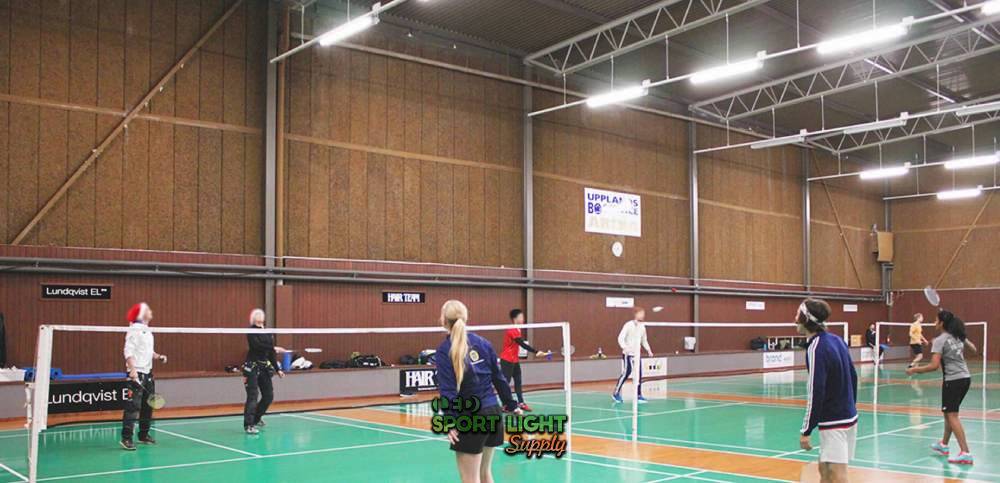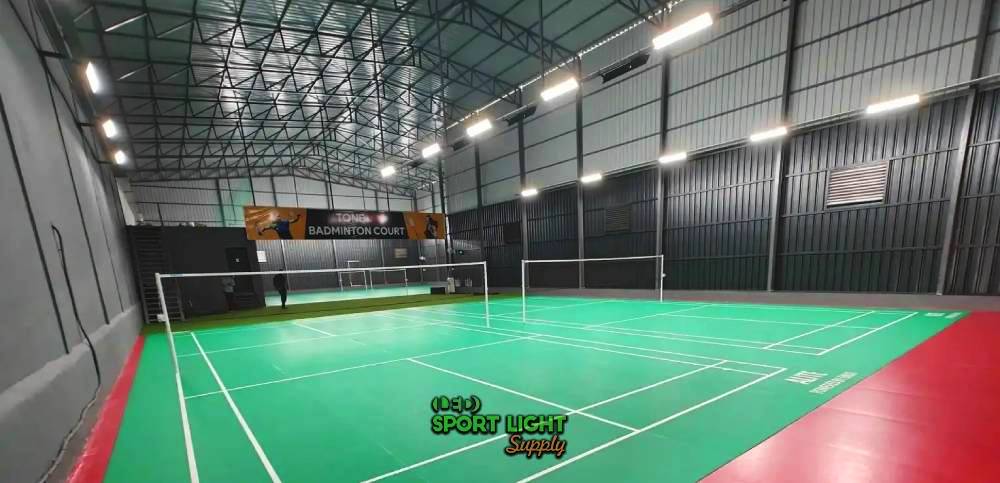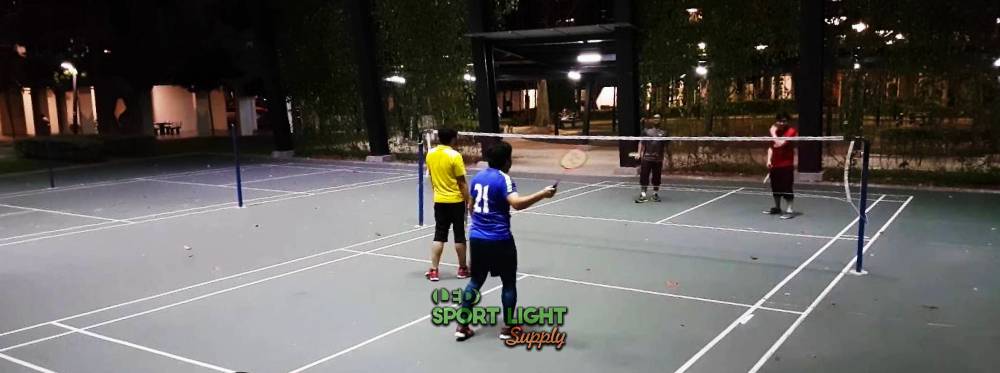Badminton is a fast-paced sport, and the quality of lighting plays a central role in both the safety and performance of players. Proper lighting ensures good visibility of the shuttlecock, reduces eye strain, and creates an overall pleasant experience. The expense of setting up and maintaining a well-lit badminton court can vary greatly depending on whether the court is indoors or outdoors. Different lighting systems, installation methods, and ongoing maintenance needs contribute to the overall cost.
| Lighting Type | Initial Setup Cost | Lifespan (Hours) | Average Energy Consumption (Watts) | Annual Energy Cost (Approx.) | Maintenance Frequency |
|---|---|---|---|---|---|
| LED | $500 – $2,000 | 80,000 – 120,000 | 50 – 100 | $200 – $600 | Low, approx. 5-10 years |
| Fluorescent | $200 – $1,500 | 5,000 – 20,000 | 80 – 150 | $250 – $700 | Moderate, approx. 3-5 years |
| Halogen | $300 – $1,500 | 1,000 – 2,000 | 100 – 500 | $600 – $1,500 | High, approx. 1-2 years |
| Incandescent | $200 – $1,000 | 1,000 – 2,000 | 100 – 300 | $800 – $2,000 | High, approx. 1 year |
| Smart Lighting (LED) | $2,000 – $5,000 | 80,000 – 120,000 | 50 – 100 | $150 – $500 | Low, approx. 5-10 years |
Table of Contents
ToggleThe size of the badminton court plays a large role in determining how much lighting is needed. A standard badminton court measures 13.4 meters long by 6.1 meters wide, but the amount of light required will also depend on the layout and the number of courts. A single court requires fewer light fixtures compared to multiple courts, and a larger area will require a more complex lighting design.
The height of the ceiling also influences how many lights are necessary and how they are distributed. Higher ceilings might require higher wattage or more lights to ensure the court is adequately illuminated. Additionally, a court with a more complex design, such as those with bleachers or spectator areas, might need more lights to cover the entire space.

The type of lighting used on a badminton court has a direct impact on the cost. There are several lighting options available, each with its own advantages and drawbacks in terms of both installation and energy efficiency.
LED Lighting has become a popular choice in recent years due to its energy efficiency and longevity. Though LEDs have a higher initial cost, they save money in the long run by consuming less power and lasting much longer than traditional bulbs. This makes them ideal for high-usage areas like sports courts.
Fluorescent Lighting is another option, offering a lower upfront cost compared to LED but consuming more energy over time. Fluorescent lights also tend to have a shorter lifespan and might require more frequent replacements, adding to maintenance costs.
Halogen and Incandescent Lighting, while less commonly used today due to energy inefficiency, might still be found in older installations. These lights provide bright, consistent illumination but consume much more energy, resulting in higher operating costs.
The way lighting is designed and distributed across the court is a significant factor in both installation and operational costs. Courts require consistent and uniform lighting to avoid shadows and glare, which can affect the players’ performance and safety. To achieve this, lights must be placed at the correct angles and heights, and the brightness should be balanced across the entire court.
In some cases, spot lighting is used, especially for professional or high-end facilities. Spotlights focus light on specific areas, but they can increase the number of light fixtures and drive up both installation and maintenance costs. On the other hand, uniform lighting systems, which spread light evenly across the court, may require more fixtures but can be more energy-efficient in the long run.
The cost of installing lights on a badminton court extends beyond just the price of the light fixtures. Depending on the size and location of the court, it may require significant electrical work, including wiring and possibly updating the circuit board or installing new outlets. For outdoor courts, special considerations such as weatherproofing the wiring, installing light poles, and ensuring the overall durability of the setup may increase the overall cost.
Professional installation services are often necessary to ensure the lights are set up correctly and safely. This may add labor costs to the project, particularly for larger courts. A well-designed system will also ensure the lights are spaced and angled properly, which might involve hiring an expert to plan the layout.
The maintenance costs for lighting systems can add up over time. Bulbs and fixtures need to be checked regularly, and worn-out or damaged components must be replaced. While LED lights have a longer lifespan and require less frequent maintenance, older types of lights like fluorescent or incandescent bulbs may need to be replaced more often, adding to the ongoing costs.
Electricity usage also plays a significant role in the long-term expenses of a badminton court. Lighting systems that run for many hours a day, especially in commercial setups, can result in high energy bills. Ensuring that the lights are energy-efficient and properly maintained will help keep electricity costs manageable.
LED lights are one of the most efficient options for lighting a badminton court. These lights consume much less energy compared to traditional bulbs and can last anywhere from 80,000 to 120,000 hours, depending on the quality of the product. While the initial investment is higher than other types of lighting, the long lifespan and low maintenance make them a cost-effective choice in the long run. LEDs also provide high-quality light that can be adjusted to meet the specific needs of a badminton court, including reducing glare and ensuring uniform brightness.
The higher upfront cost of LED lights is often offset by the savings on energy bills and maintenance. For instance, a well-placed LED system can use up to 70% less electricity than conventional lighting systems, providing significant savings over time. Given that badminton courts are frequently used for extended periods, LEDs offer a good return on investment.

Fluorescent lighting offers a lower initial investment than LED lighting, but it consumes more energy and tends to have a shorter lifespan. These lights are often chosen for budget-friendly setups where initial costs are the primary concern. While they are still more energy-efficient than halogen or incandescent lights, they are not as cost-effective in the long term as LEDs.
One disadvantage of fluorescent lighting is that the fixtures are more sensitive to temperature and humidity, which can cause them to burn out faster. This could be a concern in outdoor courts or in areas with extreme weather. Additionally, fluorescent lights can sometimes produce a flicker or uneven light distribution, which could interfere with the play on a badminton court.
Halogen and incandescent lights are less common on badminton courts due to their high energy consumption and shorter lifespan. These lights provide bright illumination, but they also waste a large portion of energy in the form of heat. They tend to have a much shorter lifespan, typically requiring replacement every 1,000 to 2,000 hours, leading to higher maintenance costs.
Despite their inefficiency, halogen lights do offer very high-quality light, making them suitable for certain settings where quality is prioritized over energy use. They are often used for temporary installations or older venues that haven’t yet upgraded to more energy-efficient systems.
Smart lighting systems are an emerging option for sports venues, offering automated control through sensors and timers. These systems can adjust the lighting based on usage patterns, ensuring that lights are only on when needed, which helps reduce energy consumption and prolongs the lifespan of the bulbs. For instance, lights can be automatically dimmed during low-usage periods or turned off completely when the court is empty.
While smart systems involve a higher upfront cost, they can offer considerable savings over time by optimizing energy use. In addition, these systems can be integrated with other building management solutions to provide a seamless experience in sports facilities.
The amount of energy consumed by the lighting system depends on the wattage of the bulbs and how long the lights are in use. LED lights, for instance, typically consume between 50 and 100 watts per fixture, while older systems like halogen and incandescent bulbs can use significantly more energy, anywhere from 100 to 500 watts per fixture.
In addition to the wattage, the number of light fixtures required to cover the court area must be considered. Larger courts or courts with more complex layouts may need more lights, which increases the overall power consumption. Commercial courts with frequent usage will see higher energy costs compared to private courts that may only be used occasionally.
There are several strategies that can help reduce energy costs for badminton court lighting. Installing timers or motion sensors can ensure that lights are only on when the court is in use. Additionally, using dimming systems or adjusting the lighting based on the time of day can help lower electricity consumption. Regular maintenance, including cleaning light fixtures and replacing bulbs before they burn out, will ensure the system is operating at peak efficiency.
Efficient placement of lights can also minimize energy waste. For instance, placing lights at the right angles and ensuring they illuminate the court evenly will prevent the need for excess wattage.
Indoor badminton courts often have lower setup complexity, but energy bills can be higher because lights are typically on for long periods. The lighting design needs to be uniform, with fixtures placed to eliminate shadows and glare. These setups are usually straightforward since the lighting is not exposed to weather conditions.

Outdoor courts, however, present additional challenges. Fixtures must be weatherproof and designed to withstand harsh conditions. The lighting setup is also more complex, often requiring light poles and extra wiring. Outdoor courts may need more powerful lights to compensate for natural light during evening play, and the ongoing energy costs can be higher due to the large wattage required.
The frequency with which the court is used plays a significant role in determining lighting expenses. Commercial courts will see a higher energy bill than residential courts due to longer play hours. Additionally, more frequent use may justify the higher initial investment in energy-efficient systems.
The cost of electricity varies depending on location, which can significantly impact the overall lighting expenses. Higher electricity rates will lead to increased operational costs, making energy-efficient solutions even more valuable.
Some regions offer incentives for installing energy-efficient lighting systems, including tax rebates or grants. These programs can help offset the initial cost of upgrading to a more sustainable lighting solution, particularly for commercial venues.
Badminton court lighting involves multiple factors that influence both setup and operational costs. From choosing the right type of lighting to designing an energy-efficient system, various elements must be considered to ensure optimal lighting while keeping costs manageable. By factoring in the size of the court, the type of lighting, and the installation requirements, court owners can make informed decisions about the best lighting solutions for their needs. Whether indoors or outdoors, each court has unique needs, and understanding these will help avoid unnecessary expenses while achieving the best lighting conditions.
Drop us a line to receive a free lighting design